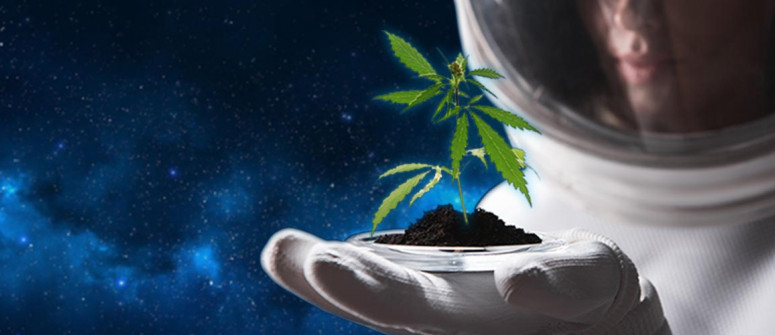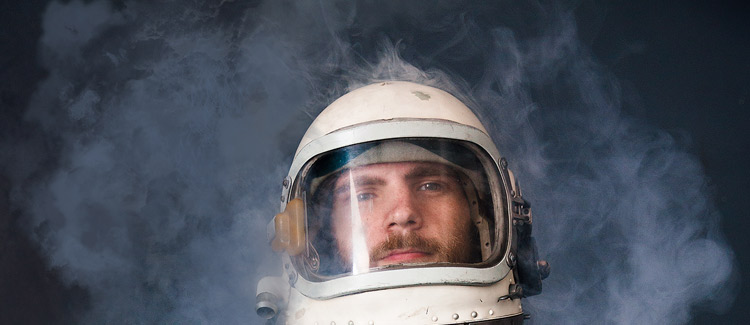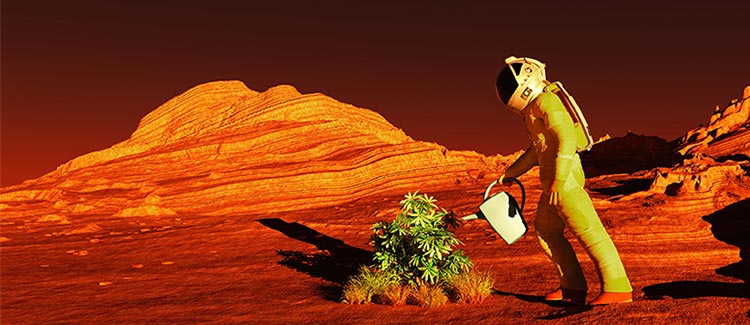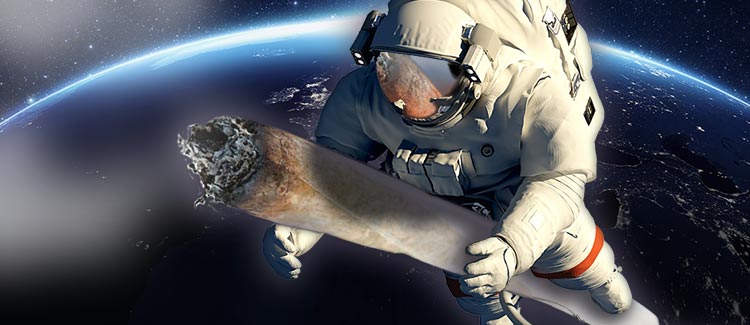Can you get high in space?

Smoking weed in space sounds like something we all want to experience. But would can we get high on the moon? Or grow weed on Mars?
We have all had these moments when getting high with your friends and the conversations get funny and weird and you find yourselves imagining the most fantastic things. One topic leads to another, and suddenly you’re talking about hotboxing in a space suit. Getting high in space. Wow.
‘Would an astronaut suffer from oxygen deprivation?’
‘Nah, we would design a special ventilation system allowing the astronaut to smoke weed without oxygen levels dropping.’
Suddenly you're designing a weed-friendly spaceship, which is like, a million dollar idea, and imagining yourself on a 10 year long space flight to god-knows-where, getting high and enjoying the view of our star system. Wow.
WHAT DOES SCIENCE SAY?

So, can you get high on marijuana in space? The answer is most likely, yes.
However, some scientists claim that our brain functioning is different in space than here on Earth. According to Stanford neuroscientist Ivan Soltesz, PhD, energetic solar particles, which we are protected from on Earth, may affect the CB1 receptors while being in space.[1]
CB1 receptors are crucial for physical and cognitive functioning and the ability to get high. Therefore, there may be a possibility that getting high in space won’t be possible. However, as far as we know, nobody has actually tried it, and to prove these theories we would need willing volunteers to be the "high pioneers" in space. But of course we’re 420% sure we could find some participants. Anybody?
The issue would of course be that NASA prevents astronauts from being intoxicated during their travels because that could sabotage their mission in a highly volatile setting.
Imagine being really stoned, and suddenly some space particle knocks off a wing from your spaceship. Red lights are flashing everywhere. The oxygen levels are dropping. You would probably only manage to make sure your weed doesn’t drift away into space, because that would be a waste. There’s no time. Stress. Panic. Hysteria.
Of course, such an event would be traumatic. But let’s remember that humans have faced grave challenges in the past and conquered them with thunderous might. We stood victorious over totalitarian regimes. We defeated life-threatening diseases. We developed the f*****g internet! We can surely come up with ways that will be able to rip a bowl in space. Maybe Elon Musk has some good ideas?
GROWING PLANTS IN SPACE

Although during the 19th Century, Charles Darwin already hypothesized that gravity is necessary for roots to grow into the earth, the first experiment on growing plants in space took place in 1999. Anna-Lisa Paul and Robert Ferl launched a small scale plantation on Space Shuttle Columbia. But contrary to Darwin's beliefs, they discovered that plants don’t need gravity for root orientation.
Further research conducted by NASA show that genetic profiles of plants change in space by switching on and off certain genetic expressions to cope with the zero gravity environment. Research is conducted on how different genetic profiles occurring in space can help us further understand the nature of our plants on earth, and how these spacey profiles can be beneficial for us humans.
In 2015, three astronauts tasted the first space-grown vegetable, the red romaine lettuce. It was grown in a special grow chamber system coined as “Veggie” developed by Orbital Technologies Corp. (ORBITEC), which is specially designed for plants to thrive in zero-gravity environments.
In the Veggie system, the seeds are placed in special plant pillows, which are designed to provide the roots with their necessities in a zero-gravity environment. The main issue with growing plants in space is that water does not absorb into the soil like it does on Earth.
In space, water "balls up" and doesn't distribute itself evenly onto the roots. This prevents roots from receiving the oxygen and nutrients they need. NASA has solved this problem with these special plant pillows and by inserting water absorbable wicks, onto which the seeds are glued in the right direction so that to the roots shoot downward and plant material upward. LED lights deliver the plants with the necessary lumens for photosynthesis and help the plants grow in the right direction.
There’s also another design, similar to the plant pillows, developed by NASA in Utah state. It consists of tightly packed small nylon triangles, providing an even water distribution for the roots.
NASA is currently experimenting with other plants such as zinnias, dwarf tomatoes, and dwarf peppers. Space-X expeditions add new resources to provide the researchers with more tools for research. Also they are working on APH “Advanced Plant Habitat”, which will allow for space plantations to be fully automated and analyzed.[2] This will allow the data to be consolidated more effectively, and allow the astronaut farmers to navigate through the rough terrain of space plantations.
CONCLUSION: GETTING HIGH IN SPACE

We are coming closer to developing automated grow systems which will provide us with our greens in space and on Mars. However, the research is still in its infancy.
Who knows, maybe growing cannabis in space will show interesting genetic structures not encountered on Earth, delivering us with some fantastic cannabinoids. As for getting high in space, it's still not quite sure how weed will affect the astronaut. However, as commercial space travel is getting nearer, it probably won’t be long before the first joint will be smoked in space.




